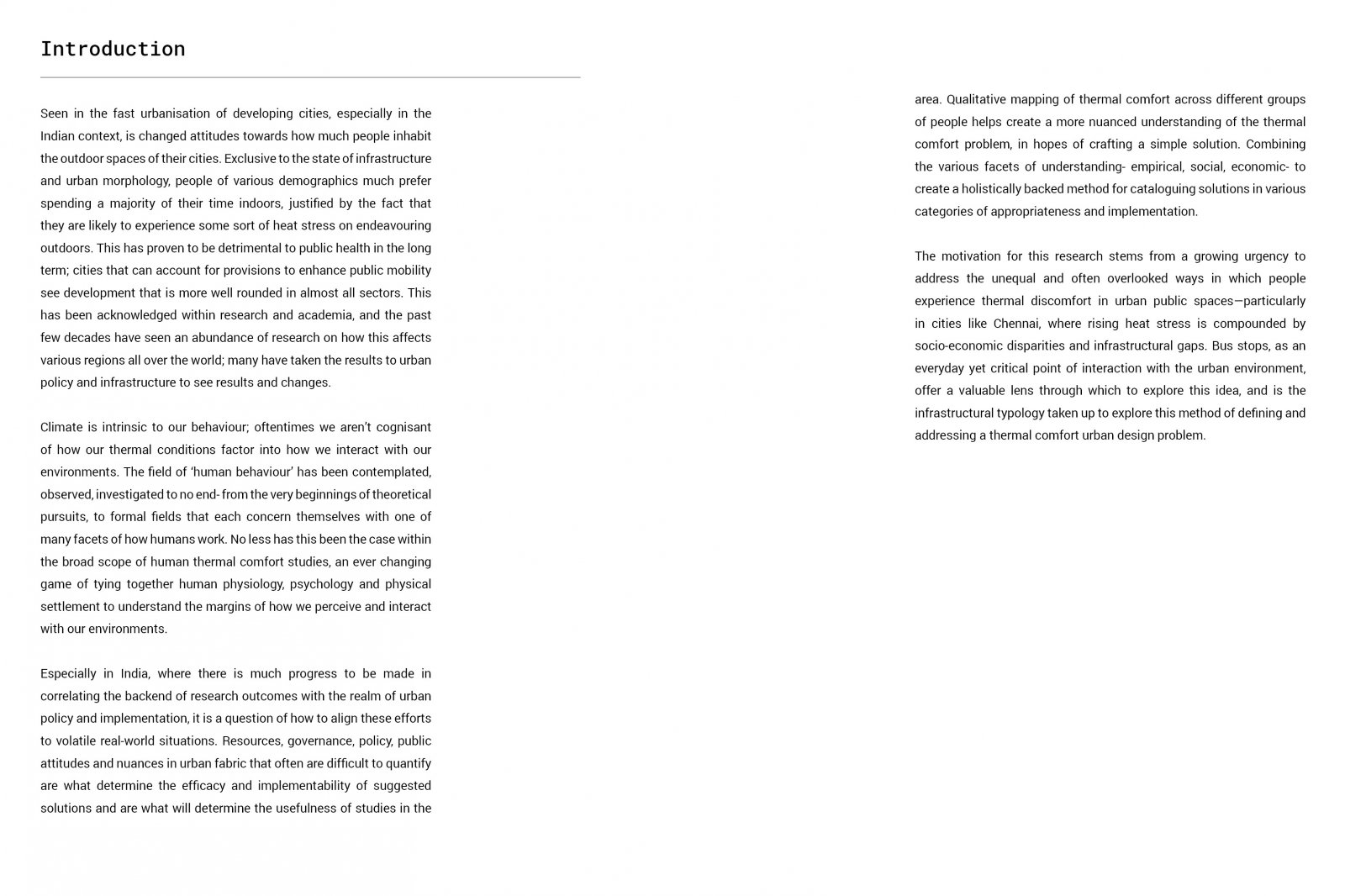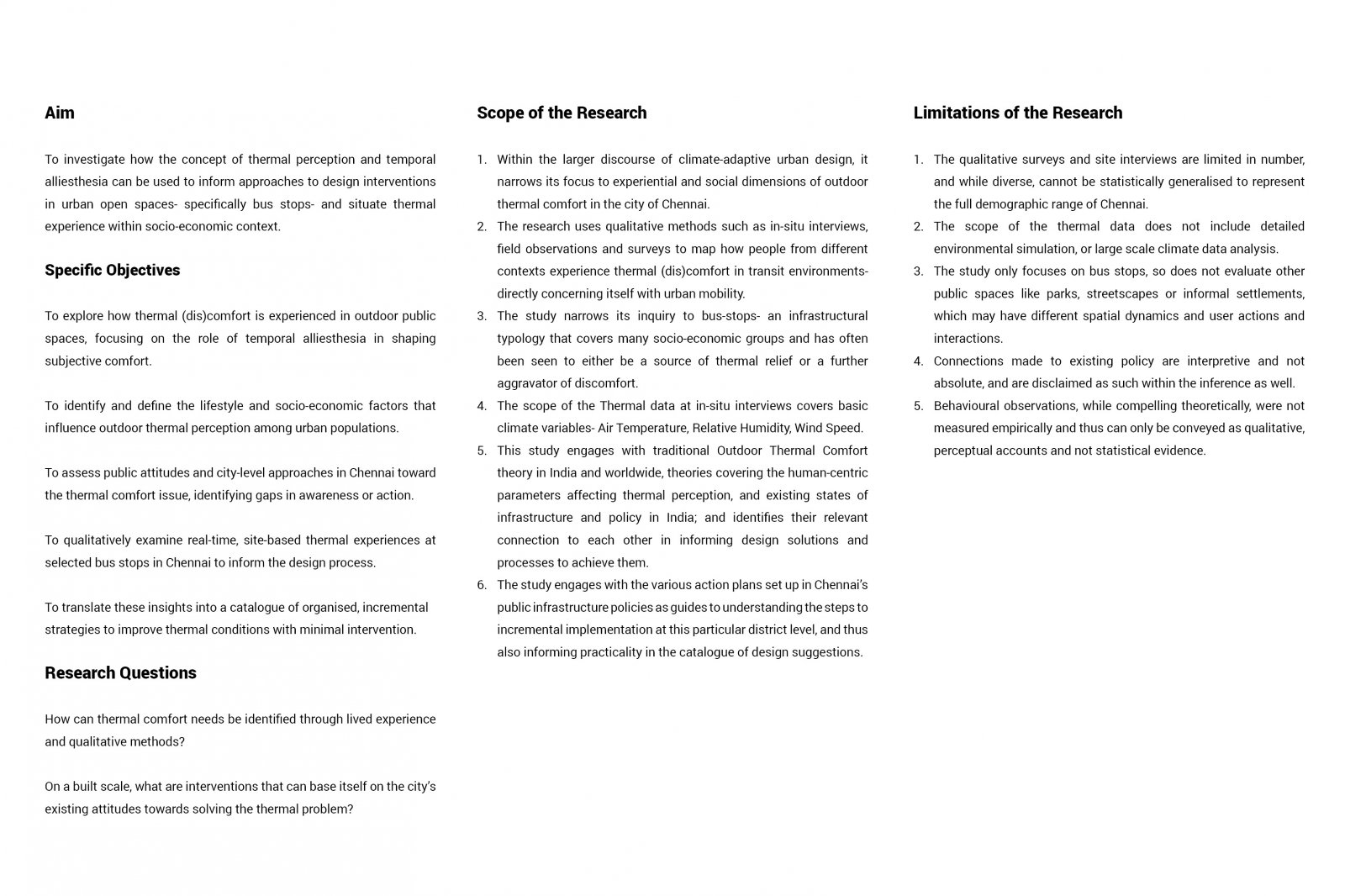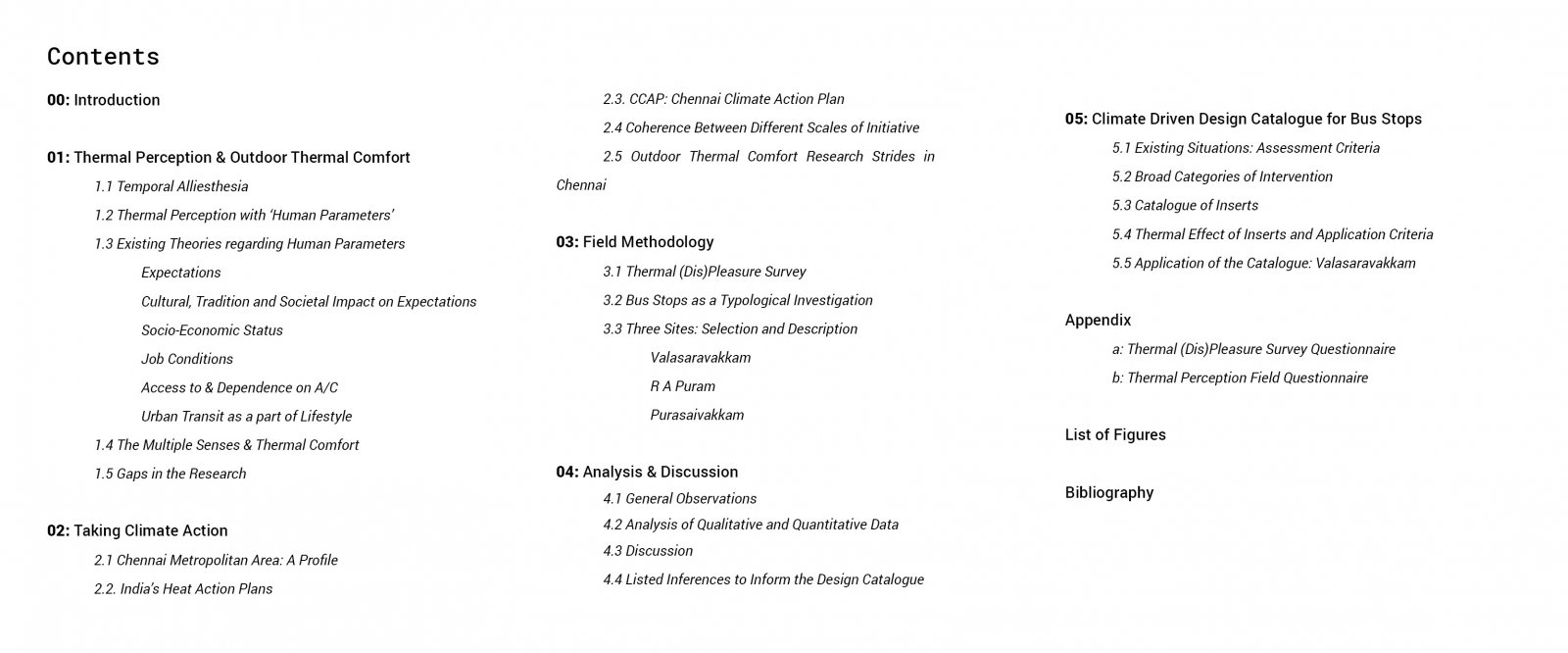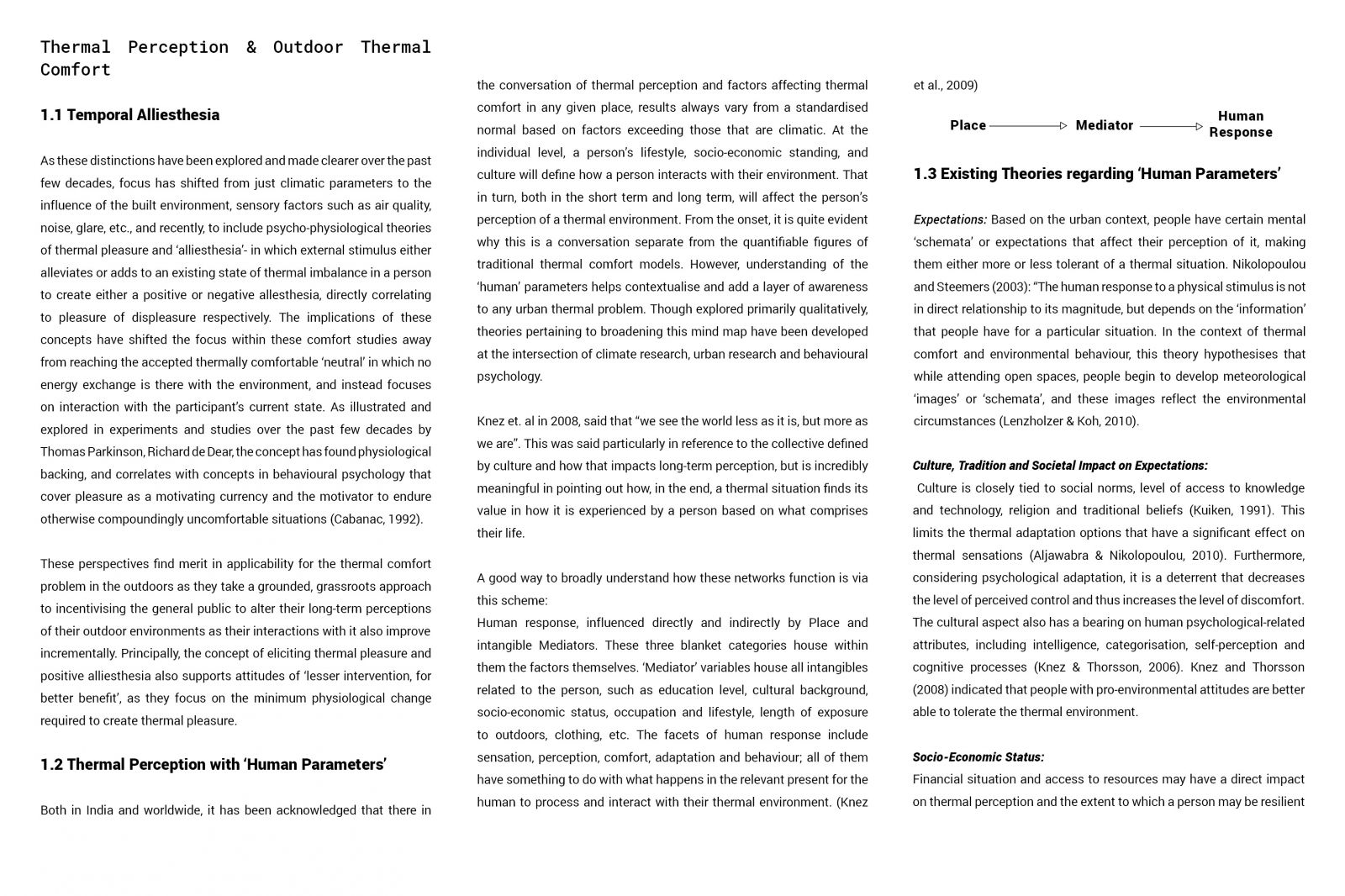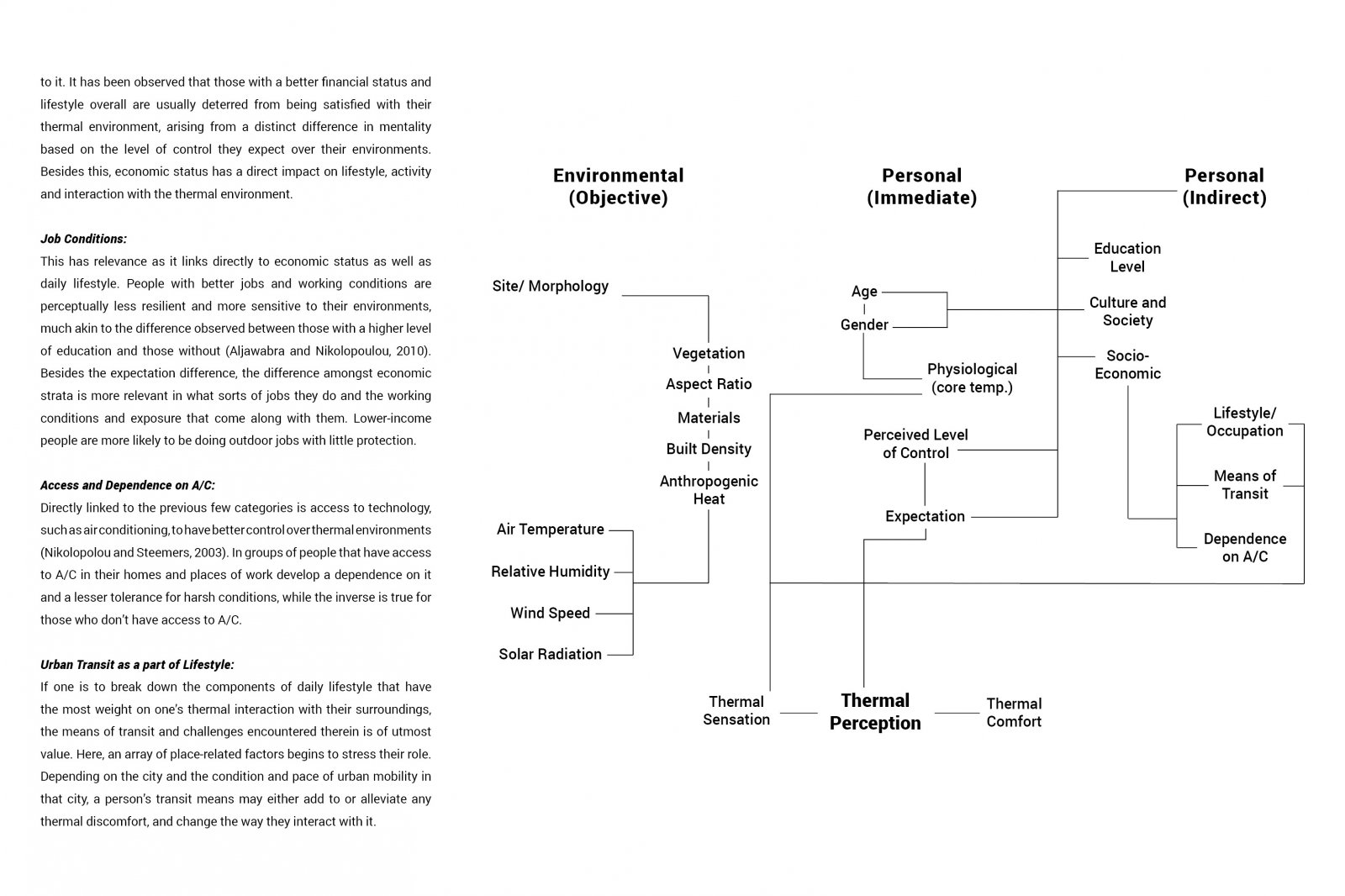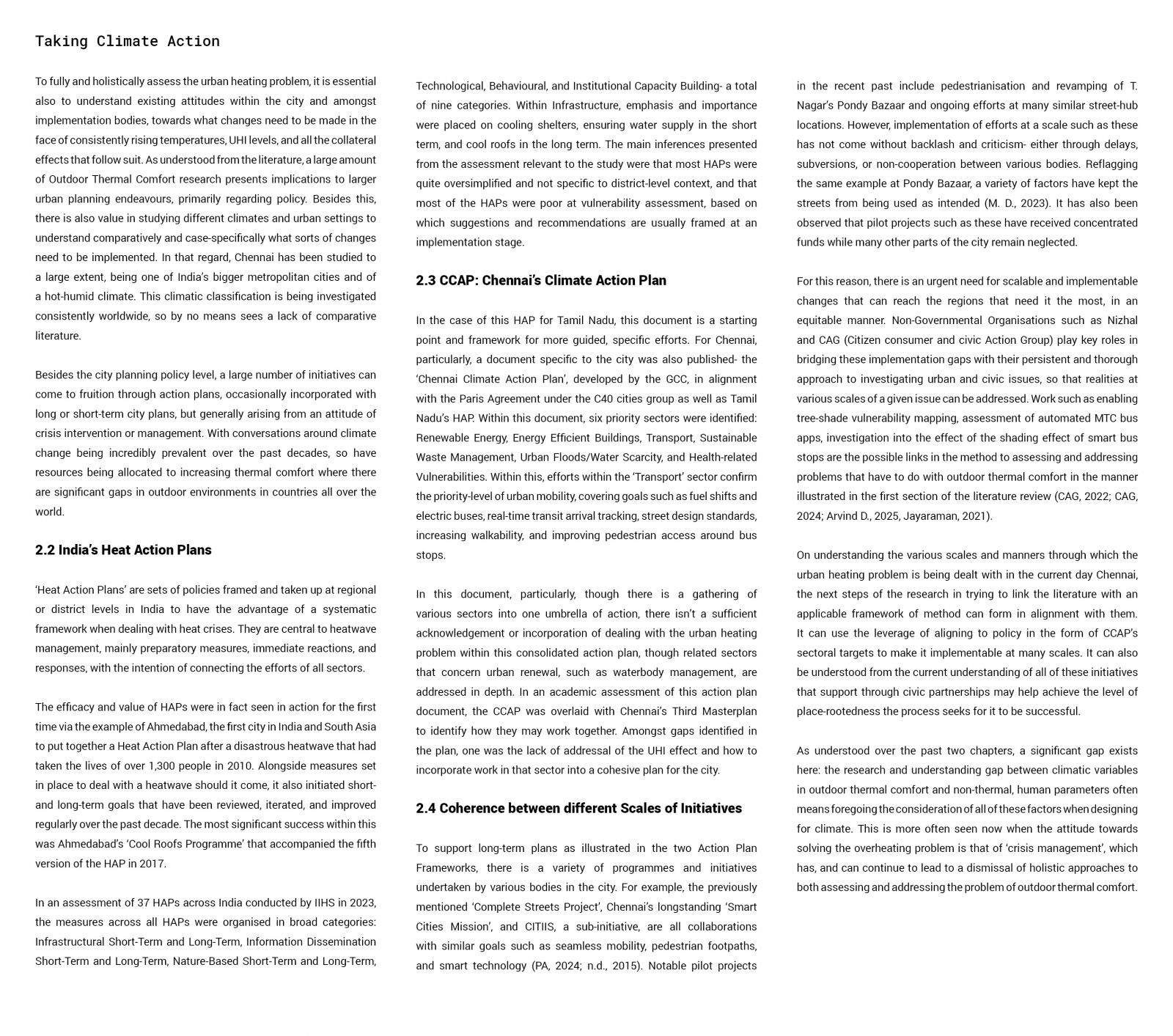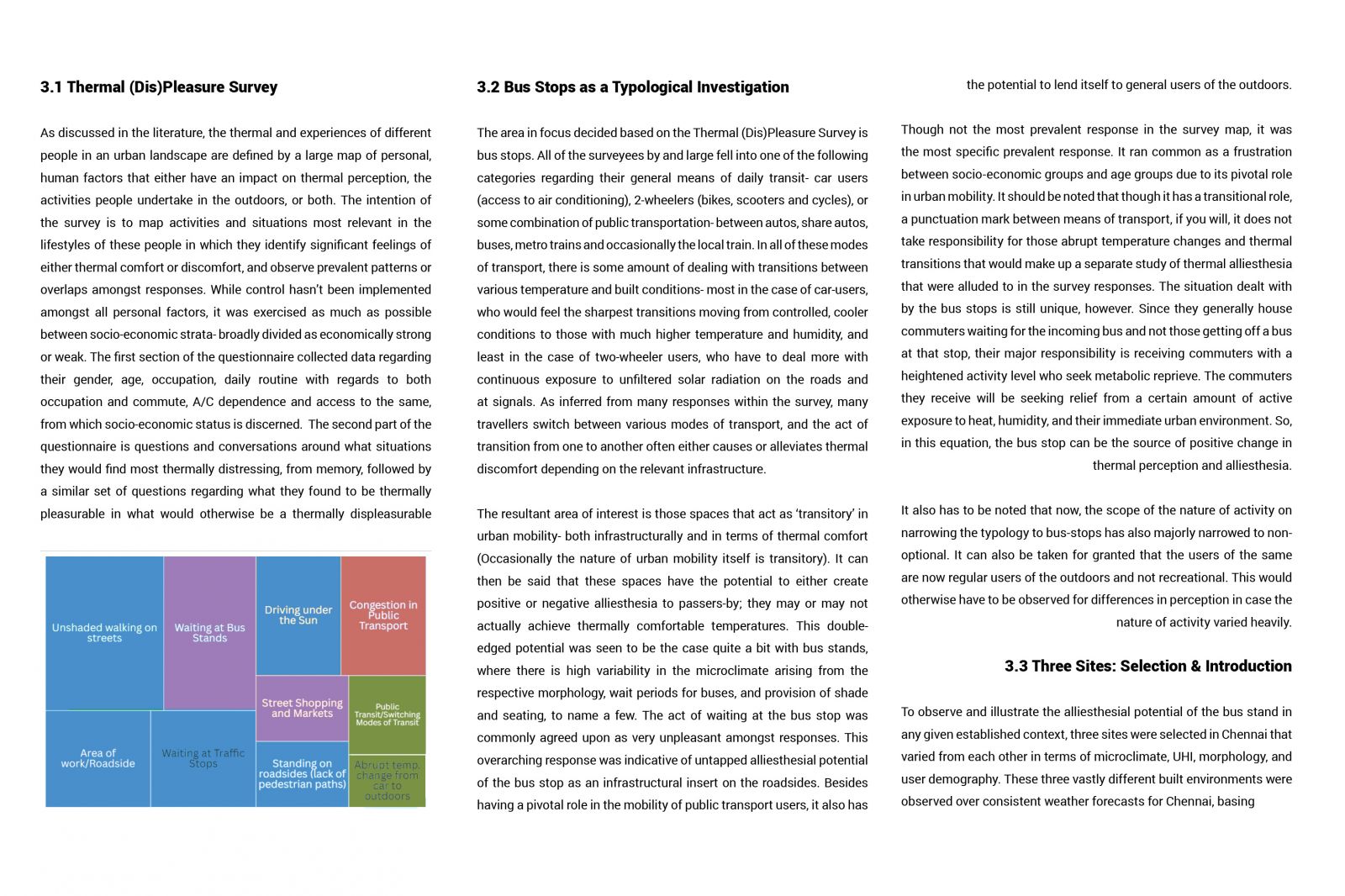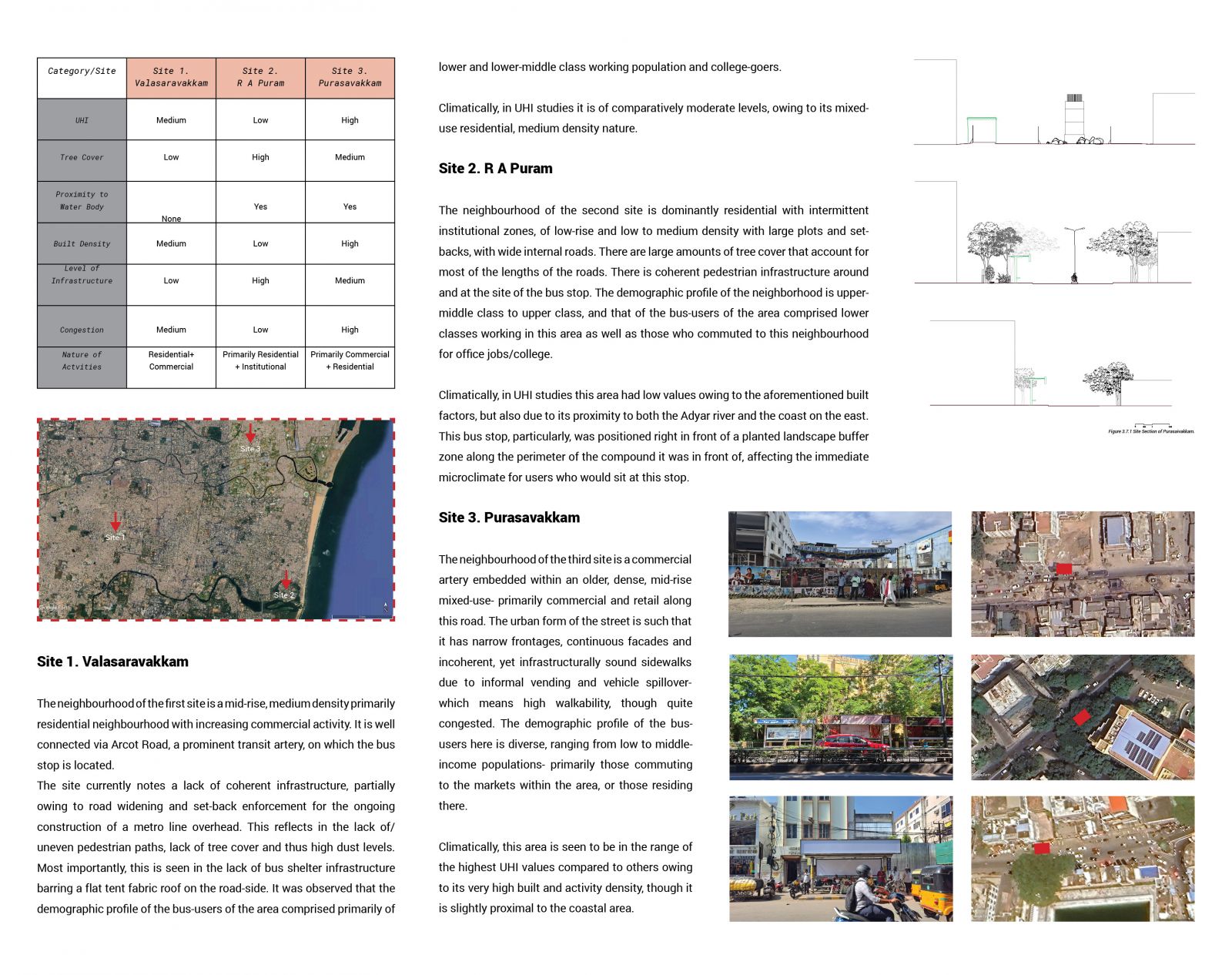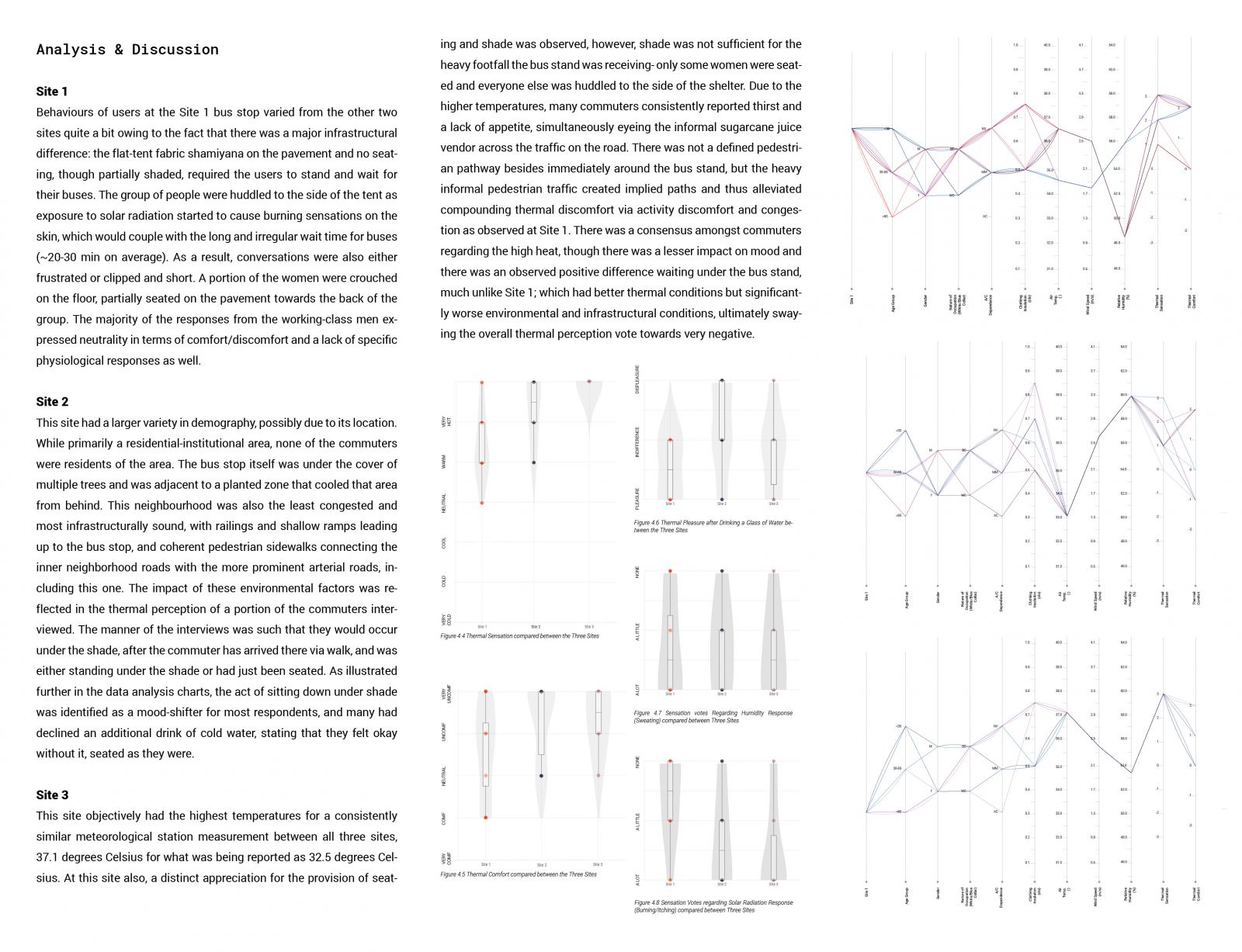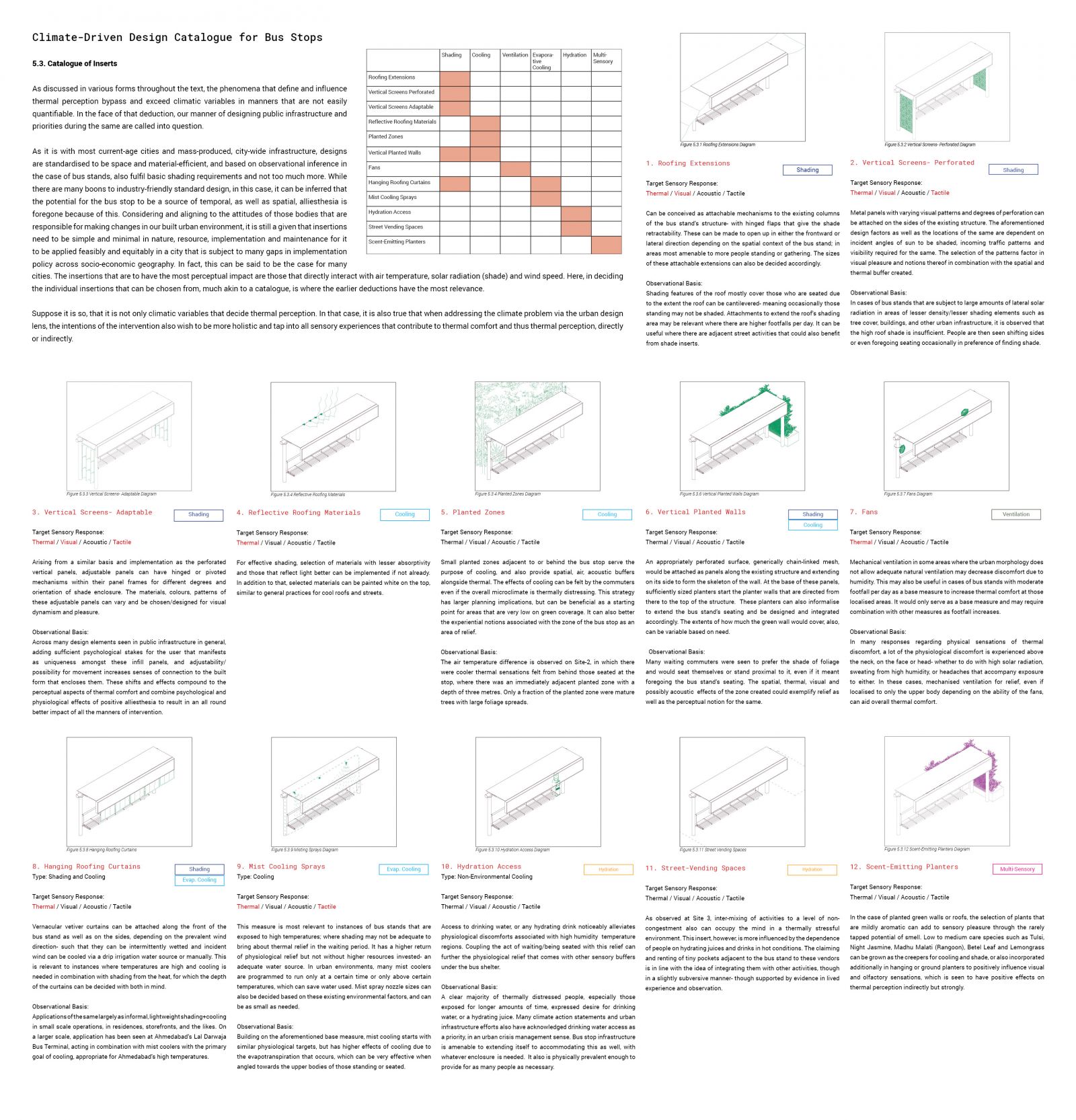Your browser is out-of-date!
For a richer surfing experience on our website, please update your browser. Update my browser now!
For a richer surfing experience on our website, please update your browser. Update my browser now!
Exploring Outdoor Thermal Comfort in Thermal Transition Zones: Alliesthesia at Bus Stops
Climate is intrinsic to our behaviour; oftentimes we aren’t cognisant of how our thermal conditions factor into how we interact with our environments. The field of ‘human behaviour’ has been contemplated, observed, investigated to no end. No less has this been the case within the broad scope of human thermal comfort studies, an ever changing game of tying together human physiology, psychology and physical settlement to understand the margins of how we perceive and interact with our environments. The motivation for this research stems from a growing urgency to address the unequal and often overlooked ways in which people experience thermal discomfort in urban public spaces—particularly in cities like Chennai, where rising heat stress is compounded by socio-economic disparities and infrastructural gaps. Bus stops, as an everyday yet critical point of interaction with the urban environment, offer a valuable lens through which to explore this idea, and is the infrastructural typology taken up to explore this method of defining and addressing a thermal comfort urban design problem.
